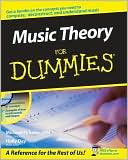Category Books
- Fiction Books & Literature
- Graphic Novels
- Horror
- Mystery & Crime
- Poetry
- Romance Books
- Science Fiction & Fantasy
- Thrillers
- Westerns
- Ages 0-2
- Ages 3-5
- Ages 6-8
- Ages 9-12
- Teens
- Children's Books
- African Americans
- Antiques & Collectibles
- Art, Architecture & Photography
- Bibles & Bible Studies
- Biography
- Business Books
- Christianity
- Computer Books & Technology Books
- Cookbooks, Food & Wine
- Crafts & Hobbies Books
- Education & Teaching
- Engineering
- Entertainment
- Foreign Languages
- Game Books
- Gay & Lesbian
- Health Books, Diet & Fitness Books
- History
- Home & Garden
- Humor Books
- Judaism & Judaica
- Law
- Medical Books
- New Age & Spirituality
- Nonfiction
- Parenting & Family
- Pets
- Philosophy
- Political Books & Current Events Books
- Psychology & Psychotherapy
- Reference
- Religion Books
- Science & Nature
- Self Improvement
- Sex & Relationships
- Social Sciences
- Sports & Adventure
- Study Guides & Test Prep
- Travel
- True Crime
- Weddings
- Women's Studies
Music Theory For Dummies »

Authors: Holly Day, Michael Pilhofer
ISBN-13: 9780764578380, ISBN-10: 0764578383
Format: Paperback
Publisher: Wiley, John & Sons, Incorporated
Date Published: April 2007
Edition: (Non-applicable)
Author Biography: Holly Day
Michael Pilhofer teaches music theory and percussion at McNally Smith College of Music in St. Paul, Minnesota, where he serves as department head of the Ensembles Department. He has worked as a professional musician for more than 18 years and has toured and recorded with Joe Lovano, Marian McPartland, Kenny Wheeler, Dave Holland, Bill Holman, Wycliffe Gordon, Peter Erskine, and Gene Bertoncini.
Holly Day has written about music for numerous publications internationally, including Computer Music Journal, ROCKRGRL, Music Alive!, Guitar One, Brutarian Magazine, Interface Technology, and Mixdown magazine. Over the past couple of decades, her writing has received an Isaac Asimov Award, a National Magazine Award, and two Midwest Writer’s Grants. Her previous books include The Insider’s Guide to the Twin Cities (3rd, 4th, and 5th Editions), Shakira, and Behind the Orange Curtain: A History of Orange County Punk Rock.
Book Synopsis
An indispensable guide for music students, musicians, and music lovers
For people who want a deeper understanding and appreciation of music, or who want to do their own composing and arranging, a basic grounding in music theory is essential. Written for the nearly 30,000 college and graduate music students as well as working musicians and serious music buffs, this hands-on guide explains music theory concepts in plain English-from scales, intervals, tempos, and dynamics to chord progressions, phrasing, harmonizing, and arranging-and demonstrates how to apply them in compositions ranging from pop and rock to jazz and classical. The book includes a CD that demonstrates music theory concepts and provides examples of the way sounds and tempos can be mixed and matched for a variety of musical experiences.
Table of Contents
Introduction.
Part I: Rhythm: Keeping the Beat.
Chapter 1: What Is Music Theory Anyway?
Chapter 2: Counting Out Notes.
Chapter 3: Giving It a Rest.
Chapter 4: Time Signatures.
Chapter 5: Naturalizing the Best.
Chapter 6: Tempo and Dynamics.
Part II: Melody: The Part You Hum.
Chapter 7: The Musical Staff.
Chapter 8: Instrument Tone and Color.
Chapter 9: Half Steps, Whole Steps, Sharps, and Flats.
Part III: Harmony: Fleshing It Out.
Chapter 10: Intervals.
Chapter 11: Key Signatures and the Circle of Fifths.
Chapter 12: The Major and Minor Scales.
Chapter 13: Building Chords.
Chapter 14: Chord Progressions.
Chapter 15: Cadence.
Part IV: Form: How It's Shaped.
Chapter 16: The Elements of Form.
Chapter 17: Classical Forms.
Chapter 18: Popular Forms.
Part V: The Part of Tens.
Chapter 19: Six Most-Frequently Asked Questions About Music Theory.
Chapter 20: Ten Cool and Useful Resources.
Chapter 21: Nine Music Theorists You Should Know About.
Appendix A: How to Use the CD.
Appendix B: Chord Chart.
Appendix C: Glossary.
Index.
Subjects

